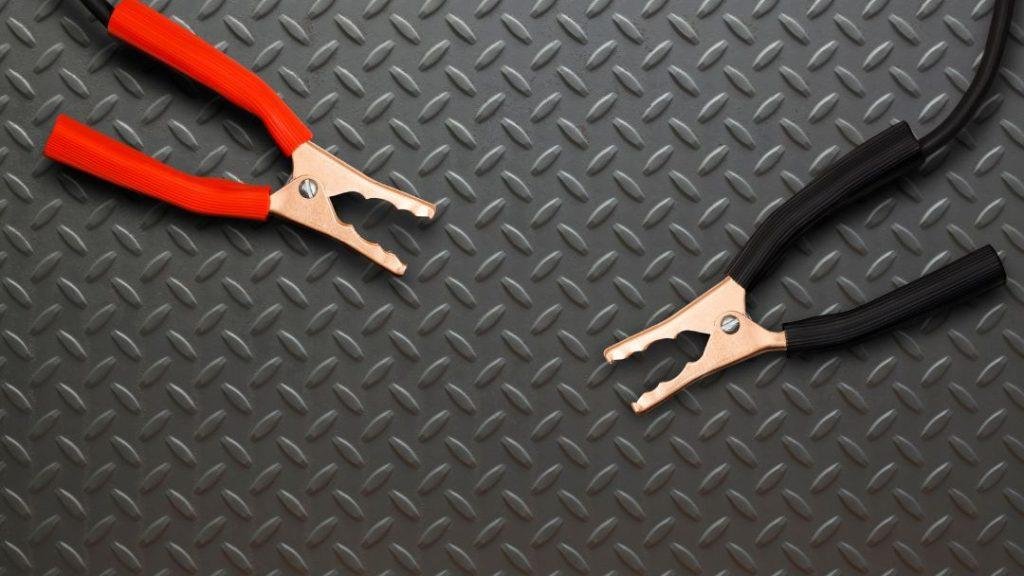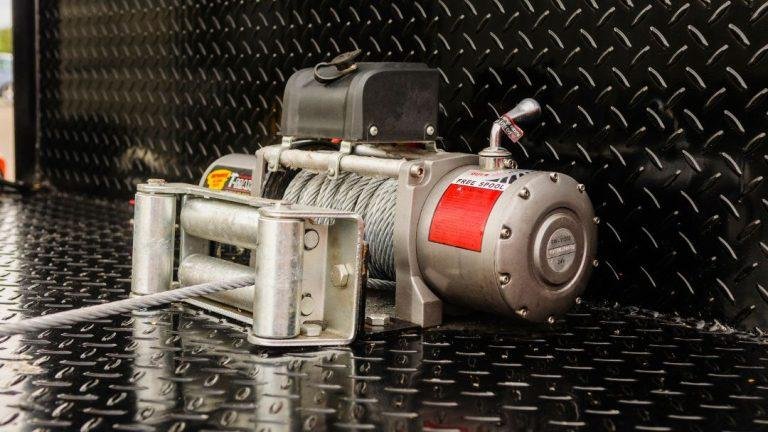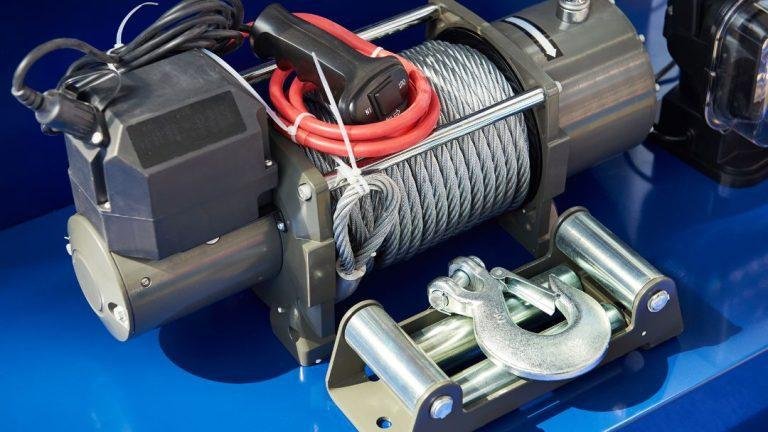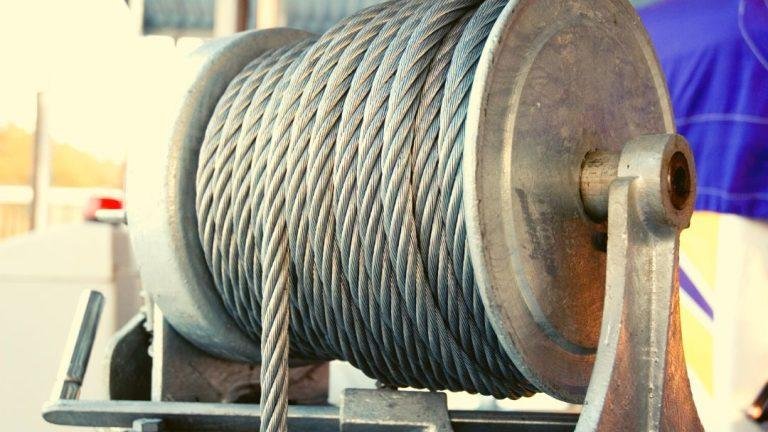If your atv dies when using the winch, it may be due to a lack of power or a faulty winch motor. This can be resolved by checking the power source and connections, replacing any worn-out parts, or repairing the winch motor as needed.
Common Reasons For ATV Shutdown While Using Winch
One common reason for an ATV shutting down while using a winch is the strain on the battery, causing it to drain quickly. Another reason could be excessive heat buildup in the motor, leading to overheating and automatic shutdown.
Atvs are incredibly versatile vehicles, designed to tackle a variety of terrains and tasks. One common issue that atv owners may encounter is their vehicle shutting down unexpectedly while using the winch. This can be frustrating, especially if you’re in the middle of a task.
In this section, we will explore the common reasons behind this problem and provide some insights on how to troubleshoot and fix it.
Battery Drainage:
- Faulty battery connections: Check the battery terminals for any loose or corrosion build-up. Ensure that the connections are tight and clean.
- Insufficient battery power: If your atv’s battery is old or not adequately charged, it may struggle to provide enough power for the winch. Consider replacing the battery or charging it fully before using the winch.
- Winch drawing excessive power: Some winches may consume more power than your atv’s electrical system can handle. Make sure the winch is compatible with your atv’s power output.
Overloading The Winch:
- Exceeding weight limits: Every winch has its weight capacity, and going beyond it can strain the motor and cause the atv to shut down. Check your winch specifications and avoid overloading it.
- Built-up tension: Continuous use of the winch without releasing tension can overheat the winch motor, leading to a shutdown. Remember to release the tension periodically during use.
Faulty Wiring:
- Loose or damaged connections: Inspect the wiring connections between the winch, battery, and atv’s electrical system. Loose or damaged wires can lead to interruptions in power flow, resulting in the atv shutting down. Secure all connections and repair or replace any damaged wires.
- Incorrect wiring installation: Improper installation of the winch or its wiring can also cause shutdowns. Consult the owner’s manual or seek professional assistance to ensure correct installation.
Troubleshooting and fixing an atv that dies when using the winch can be a straightforward process if you know what to look for. By checking the battery drainage, avoiding overloading the winch, and addressing any faulty wiring, you can keep your atv running smoothly and complete your tasks without interruptions.
Remember to always prioritize safety and consult a professional if you encounter any difficulties.

Inspecting The Battery
When using the winch on your atv, if it dies unexpectedly, it’s crucial to inspect the battery for potential issues. Look for loose connections, corrosion, or a weak battery that may need to be replaced. By addressing these battery-related problems, you can ensure a reliable and uninterrupted winching experience.
Is your atv suddenly shutting off while using the winch? You’re not alone. This problem is often attributed to various factors, one of which is the battery. A faulty battery or loose connections can cause the atv to die unexpectedly.
In this section, we will explore how to inspect the battery to identify any issues that may be causing this problem.
Checking Battery Connections:
To begin diagnosing the problem, let’s start by inspecting the battery connections. Loose or corroded connections can disrupt the flow of power and lead to the atv dying when using the winch. Here’s what you should do:
- Visually examine the battery connections: Take a close look at the battery terminals and cables. Look for any signs of corrosion, such as a white powdery substance on the terminals. Clean off any corrosion using a mixture of baking soda and water and a wire brush.
- Tighten the connections: Ensure that the battery cables are securely attached to the terminals. Use a wrench to tighten any loose connections. This will help establish a solid electrical connection.
- Inspect the cables: Check the battery cables for any signs of damage or wear. Look for frayed or corroded wires. If you notice any issues, consider replacing the cables to ensure a reliable connection.
Remember, proper battery connection is crucial to the smooth functioning of your atv’s electrical system. By checking and securing the connections, you can eliminate one potential cause of the atv dying when using the winch.
Testing Battery Voltage:
In addition to checking the connections, testing the battery voltage can provide valuable insights into the overall health of the battery. A weak or faulty battery can result in power loss, leading to the atv shutting off unexpectedly. Here’s how you can test the battery voltage:
- Use a multimeter: Set your multimeter to the dc voltage setting. Connect the red probe to the positive terminal of the battery and the black probe to the negative terminal.
- Read the voltage: The multimeter will display the battery voltage. A fully charged battery should read around 12.6 volts. If the reading is significantly lower, it indicates a weak or discharged battery that may need replacement.
By testing the battery voltage, you can determine if the battery is a probable culprit behind the atv dying when using the winch. If the voltage is low, it’s advisable to recharge or replace the battery to maintain optimal performance.
Remember, a thorough inspection of the battery, including checking the connections and testing the voltage, can help you identify potential issues. By ensuring proper battery health, you can reduce the likelihood of your atv dying when using the winch.
Evaluating Winch Load
Evaluating winch load is essential to prevent an atv from dying while using the winch. Proper assessment of the load capacity and understanding the limitations is crucial for safe and effective usage.
If you’re experiencing your atv dying when using the winch, it could be due to overloading. Evaluating the winch load is crucial to ensure that you’re not exceeding the maximum weight capacity and causing strain on your atv. Here are some key points to consider:
- Determining maximum weight capacity: Before using the winch, it’s important to know the maximum weight capacity specified by the manufacturer. Make sure to check the owner’s manual or manufacturer’s website for this information. Exceeding the weight capacity can lead to strain on the atv’s engine and electrical system, causing it to shut off.
- Avoiding overloading: To avoid overloading the winch, follow these guidelines:
- Know the weight of the load: It’s essential to accurately assess the weight of the load you intend to pull. Use a scale or consult the product specifications if available.
- Consider the angle and terrain: Pulling a load on an incline or rough terrain can increase the strain on the atv. Be cautious and adjust the load accordingly to prevent overloading.
- Distribute the weight evenly: Ensure that the weight is evenly distributed on the atv. Uneven loads can cause instability and potential damage to your vehicle.
- Use snatch blocks: If you need to pull a load exceeding the winch’s capacity, consider using snatch blocks to reduce the strain on the atv. Snatch blocks help increase the pulling power by changing the direction of the cable.
Remember, overloading the winch can result in your atv shutting off unexpectedly. By evaluating the winch load and adhering to the maximum weight capacity, you can prevent potential damages and ensure a smooth winching experience.
Examining Wiring Connections
Examining wiring connections is crucial for troubleshooting why an atv dies when using a winch. By carefully inspecting the wiring, you can identify any loose or damaged connections that may be causing the issue, allowing you to fix it and prevent further problems.
Atv Dies When Using Winch
If you’ve ever experienced your atv suddenly dying when using the winch, you know how frustrating it can be. Before you start panicking or spending money on expensive repairs, take the time to examine the wiring connections. Loose connections or damaged wires could be the culprits behind this issue.
In this section, we will explore how to identify loose connections and how to repair or replace damaged wires.
Identifying Loose Connections:
Loose connections can disrupt the flow of electricity, causing your atv to shut down unexpectedly. Here are a few indicators that you may have loose wiring connections:
- Intermittent power loss when operating the winch
- Flickering lights on the atv
- Unusual noises coming from the winch motor
To identify if loose connections are the problem, follow these steps:
- Visually inspect the wiring: Look for any visibly loose or disconnected wires near the winch and battery connections. Ensure that all the wires are properly connected to their respective terminals.
- Tighten loose connections: Use a wrench or screwdriver to tighten any loose connections you find. Ensure that the connections are secure and free from any corrosion or debris.
- Check for damaged insulation: Inspect the wiring for any signs of frayed or damaged insulation. If you notice any, it is crucial to repair or replace the affected wires to prevent further complications.
Repairing Or Replacing Damaged Wires:
Damaged wires can lead to power interruptions and ultimately cause your atv to die when using the winch. Here’s how you can repair or replace damaged wires:
- Cut out the damaged section: If you discover a damaged wire, carefully cut out the affected section using wire cutters. Ensure that you remove enough wire to eliminate all signs of damage.
- Strip the wire ends: Use wire strippers to remove approximately half an inch of insulation from both ends of the wire. This will expose the clean, bare wire for a proper connection.
- Connect the wires: If you only need to repair a damaged wire, twist the stripped ends together and secure them with electrical tape or wire connectors. For severe damage, consider replacing the entire wire with a new one.
- Test the winch operation: After making the necessary repairs or replacements, test the winch operation to ensure that the atv no longer dies. Operate the winch under load to verify that the connections hold up under pressure.
By examining your atv’s wiring connections, you can often resolve the issue of the atv dying when using the winch. Remember to identify any loose connections and tighten them appropriately. If you find damaged wires, repair them by cutting out the affected section or replacing the entire wire.
With a little troubleshooting and basic repairs, you’ll be back to enjoying your atv’s winch without any power interruptions.
Regular Battery Maintenance
To prevent your atv from dying when using the winch, it’s essential to prioritize regular battery maintenance. By conducting routine checks and ensuring the battery is clean, charged, and properly connected, you can avoid any unexpected interruptions during winching operations.
Make battery maintenance a top priority for uninterrupted atv performance.
Atv dies when using winch, and you’re left stranded in the middle of nowhere. Frustrating, isn’t it? There are many potential causes for this issue, but one common culprit is often overlooked – the battery. Regular battery maintenance is crucial to ensure your atv’s winch operates smoothly and efficiently.
In this section, we will explore two important aspects of battery maintenance: cleaning battery terminals and testing battery health.
Cleaning Battery Terminals
Keeping your battery terminals clean is essential for maintaining a strong electrical connection. Over time, corrosion and grime can accumulate on the terminals, hindering the flow of electricity. By following these simple steps, you can ensure your battery terminals remain in top condition:
- Start by removing the battery cables from the terminals. Remember to disconnect the negative cable first to avoid any potential short circuits.
- Inspect the terminals for any signs of corrosion, such as a powdery substance or buildup. If corrosion is present, mix a small amount of baking soda with water to create a paste.
- Use a wire brush or toothbrush to gently scrub the paste onto the terminals. Ensure that the paste makes contact with all corroded areas.
- Once the terminals are clean, rinse them thoroughly with clean water and dry them with a clean cloth.
- Finally, apply a thin layer of petroleum jelly or dielectric grease to the terminals. This will help prevent future corrosion and ensure a solid electrical connection.
Remember, regular cleaning of battery terminals can greatly improve the performance and lifespan of your atv’s winch.
Testing Battery Health
To avoid unexpected power issues while using your winch, it’s crucial to regularly test the health of your battery. Here are a few methods to determine if your battery requires replacement:
- Use a multimeter to measure the battery voltage. A fully charged battery should read around 12.6 volts.
- If your battery is older or has been in use for an extended period, a load test can provide a more accurate picture of its health. This test simulates real-world conditions to assess the battery’s ability to deliver power under a heavy load.
- Another method is a specific gravity test, which involves measuring the density of the sulfuric acid in each cell of a lead-acid battery. This test can help identify cells that may be failing or require maintenance.
- It’s also worth examining the battery for any visible signs of damage, such as cracks, leaks, or bulging. These indicators may suggest a faulty battery that needs replacement.
Regularly testing your battery’s health will help you identify any issues early on, ensuring reliable performance of your winch when you need it the most.
By implementing these battery maintenance practices, you can minimize the risk of power failure while using your atv’s winch. Cleaning the battery terminals and regularly testing the battery’s health are simple yet effective ways to keep your atv in peak condition.
Don’t let a dead battery leave you stranded – take proactive steps to maintain your battery and enjoy uninterrupted winching adventures.
Proper Winch Usage
Using a winch on an atv can lead to the engine dying. Understanding proper winch usage is crucial in preventing this issue and ensuring a smooth operation of your vehicle. Learn how to avoid this situation and maximize the effectiveness of your winch.
Atv Dies When Using Winch
If you’re experiencing the frustrating issue of your atv dying when using a winch, proper winch usage is crucial. Understanding load limits and distributing the load properly are key factors to ensure smooth operation. Let’s dive deeper into these important considerations.
Understanding Load Limits:
- Know your atv’s load capacity: Every atv has a specific load capacity mentioned in the owner’s manual. It is important to adhere to this limit to avoid putting excessive strain on your atv’s engine.
- Be aware of winch load ratings: Winches come with load ratings that indicate the maximum weight they can handle. Ensure that you select a winch with a load rating suitable for the intended tasks.
- Consider vehicle modifications: If you’ve made modifications to your atv, such as adding additional accessories or larger tires, it can affect the load capacity and performance. Take these modifications into account when calculating the load limits.
- Factor in terrain conditions: The difficulty of the terrain can impact the required winch load. Uphill climbs or muddy conditions often require more power from the winch. Adjust your load limits accordingly to ensure optimal performance.
Distributing Load Properly:
- Balance the load distribution: Uneven load distribution can strain the atv’s engine and potentially cause it to stall. Ensure that the weight is evenly distributed between the atv and the winch.
- Use pulleys to your advantage: Pulleys can effectively distribute the load by providing mechanical advantage. By using pulleys, you can reduce the strain on your atv and winch while still achieving the desired pulling power.
- Avoid sudden jerks: When using the winch, avoid abrupt throttle inputs or jerk movements. These can put an excessive load on the atv’s engine and increase the chances of stalling. Instead, apply smooth and gradual pressure to maintain a steady pull.
- Monitor the battery: Excessive winch usage can drain the atv’s battery. A weak battery may not provide enough power to keep the engine running, resulting in stalling. Regularly check and maintain your battery to ensure uninterrupted winching operations.
By adhering to the understanding of load limits and distributing the load properly, you can prevent your atv from dying when using the winch. Take the time to assess the weight limitations, distribute the load evenly, and operate the winch smoothly.
This will ensure a safe and efficient winching experience for your atv.
Ensuring Secure Wiring
Ensure secure wiring on your atv to prevent stalling when using the winch, avoiding potential accidents and damage. Take necessary precautions by properly organizing and protecting the wiring, ensuring a safe and reliable winching experience.
Driving an atv can be an exhilarating experience, but it can quickly turn frustrating when your atv dies unexpectedly while using the winch. One common cause of this issue is insecure wiring. Ensuring secure wiring is crucial to prevent your atv from stalling during winching operations.
In this section, we will explore two important aspects of secure wiring: periodic inspection and using protective sleeves.
Periodic Inspection
Regularly inspecting your atv’s wiring system is essential to identify any potential issues and prevent malfunctions. Consider the following steps during your inspection:
- Check for loose connections: Ensure all electrical connections related to the winch are securely tightened. Loose connections can cause the atv to lose power and stall.
- Examine worn wires: Inspect the wiring harness for any signs of wear, fraying, or exposed wires. Damaged wires are vulnerable to short circuits and can disrupt the flow of electricity.
- Test the battery: A weak or faulty battery can lead to power interruptions, causing the atv to shut off when using the winch. Use a multimeter to measure the battery’s voltage and check if it meets the manufacturer’s specifications.
- Verify fuse integrity: Inspect the fuses in the wiring system to ensure they are not blown or damaged. Faulty fuses can interrupt the power supply and result in your atv dying when the winch is in use.
Using Protective Sleeves
Protective sleeves offer an additional layer of security to your atv’s wiring system, shielding it from potential hazards and preventing premature wear. Here’s why you should consider using protective sleeves:
- Abrasion resistance: Protective sleeves are designed to withstand the friction and rubbing that may occur during off-road adventures. By shielding the wires, they prevent damage caused by rocks, branches, or any other abrasive elements along the trail.
- Moisture and dirt protection: Off-roading can expose your atv’s wiring system to moisture, dirt, and debris. Protective sleeves provide a barrier against these elements, minimizing the risk of corrosion or short circuits that could cause your atv to stall.
- Heat insulation: When using a winch, the wiring system may experience increased heat due to the high current flow. Protective sleeves with heat insulation properties are particularly beneficial in these situations, as they help dissipate heat and prevent overheating issues.
- Improved durability: By adding an extra layer of protection, you enhance the overall durability and lifespan of your atv’s wiring system. This ensures a reliable and uninterrupted winching experience.
Ensure secure wiring by conducting periodic inspections and using protective sleeves on your atv. By following these practices, you can minimize the chances of your atv dying when using the winch, and enjoy worry-free off-roading adventures.
Frequently Asked Questions
Why Is My Winch Killing My Battery?
Using a winch excessively can drain your vehicle’s battery due to the high power demand. The winch motor draws a large amount of current from the battery, causing it to lose charge over time. To prevent this, ensure that your winching activities are limited and use the winch only when necessary.
Alternatively, you can connect a separate deep-cycle battery to power the winch, reducing the strain on the vehicle’s battery. Additionally, check that your winch is properly wired to minimize power loss. Regularly inspect and maintain your battery’s health, keeping it charged and in good condition.
Taking these precautions can help prevent your winch from depleting your vehicle’s battery.
Will A Four Wheeler Battery Run A Winch?
Yes, a four wheeler battery can run a winch. The battery powers the winch motor, allowing it to pull and lift heavy loads. Make sure the battery is fully charged and has enough capacity to handle the winch’s power requirements.
Regularly check the battery’s health and performance to ensure proper functioning. Keep in mind that the battery’s lifespan may be affected by using it to power a winch. It is recommended to invest in a high-quality battery and consult the manufacturer’s guidelines for the winch and battery compatibility.
Take necessary precautions while operating the winch, such as using a winch switch and avoiding excessive strain on the battery.
Why Does My Atv Keep Stalling Out?
Your atv may keep stalling out due to several reasons. The first could be a dirty fuel system, including the carburetor or fuel filter. Another possibility is a malfunctioning ignition system, such as faulty spark plugs or ignition coils. Additionally, a clogged air filter can restrict airflow and cause stalling.
It’s also crucial to check the throttle and idle settings, as incorrect adjustments can lead to stalling. Moreover, an old or weak battery could hinder the atv’s performance and cause intermittent stalling. Lastly, inspect the fuel quality and ensure you’re using the recommended octane level.
Regular maintenance, including cleaning and servicing these components, can help prevent stalling issues. Remember to consult a professional if you’re unsure about troubleshooting these problems yourself.
How Strong Of A Winch Do I Need For Atv?
To determine the strength of a winch for your atv, consider the weight of your vehicle. For atvs up to 1,500 pounds, a winch with a capacity of 2,000 pounds is sufficient. If your atv weighs between 1,500 and 3,500 pounds, opt for a winch with a capacity of around 3,500 pounds.
Atvs heavier than 3,500 pounds require winches with capacities ranging from 4,500 to 5,500 pounds. Make sure to match the winch’s pulling power to your atv’s weight to ensure effective recovery in case of emergencies or stuck situations. Remember, using a winch with lower capacity can result in damage or failure during recovery.
Always prioritize selecting a winch that can handle your atv’s weight comfortably.
Conclusion
Experiencing your atv dying while using a winch can be frustrating and inconvenient. However, by understanding the common causes and implementing the necessary precautions, you can prevent this issue from occurring. Remember to verify the power source, ensure proper grounding, and avoid overloading the winch.
Regular maintenance and inspections are essential to keep your atv and winch in optimal condition. If you have checked all these factors and the problem persists, it may be time to consult a professional mechanic for further assistance. By taking the time to address any issues promptly and effectively, you can enjoy a hassle-free atv winching experience and maximize the longevity of your vehicle.
Stay safe and happy riding!




